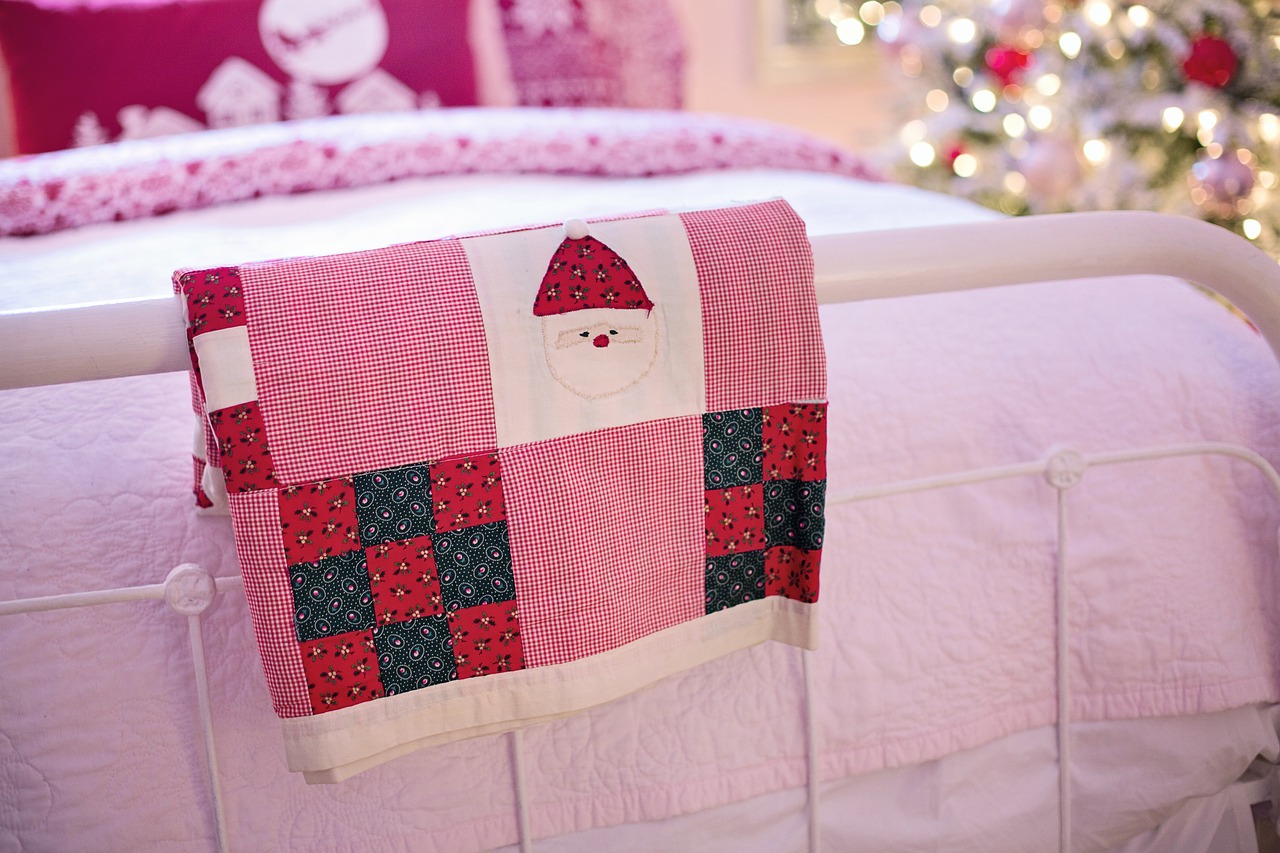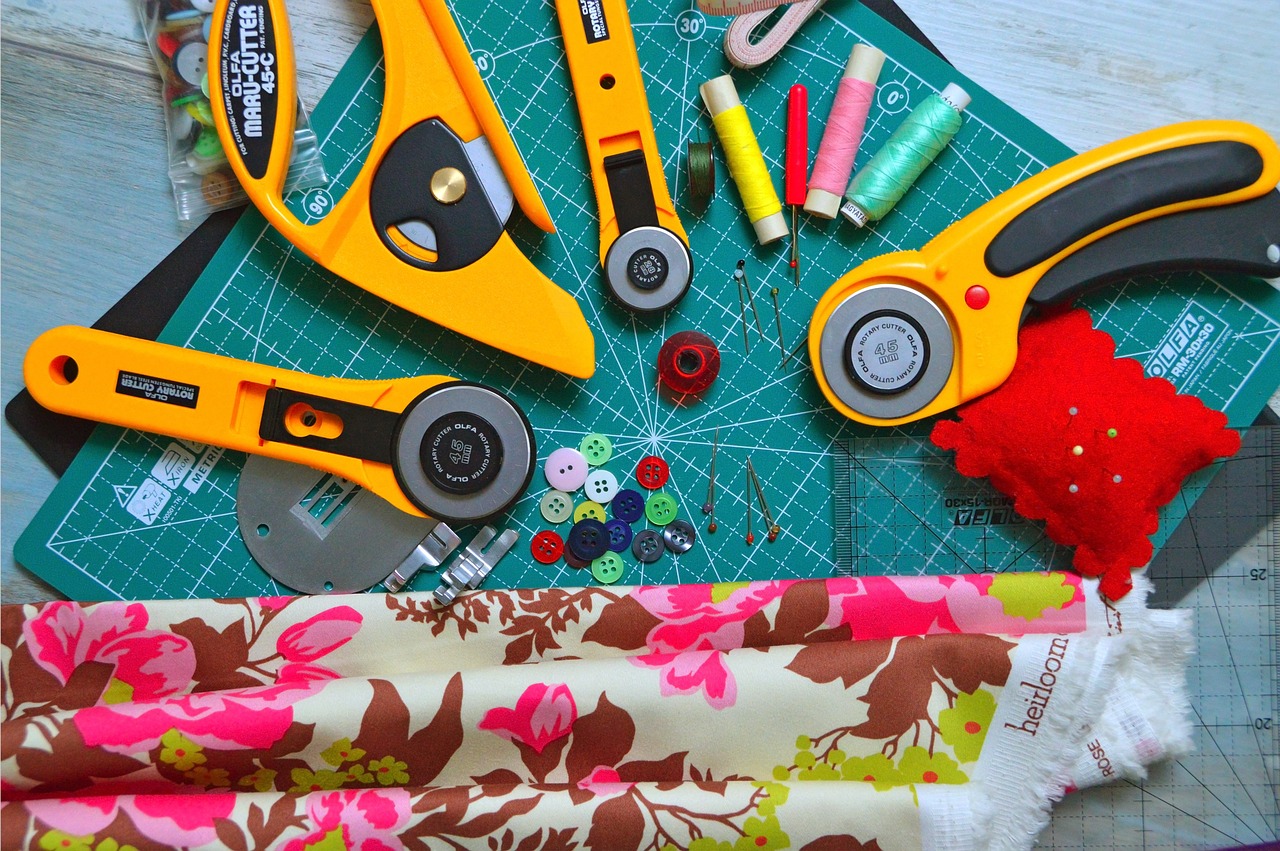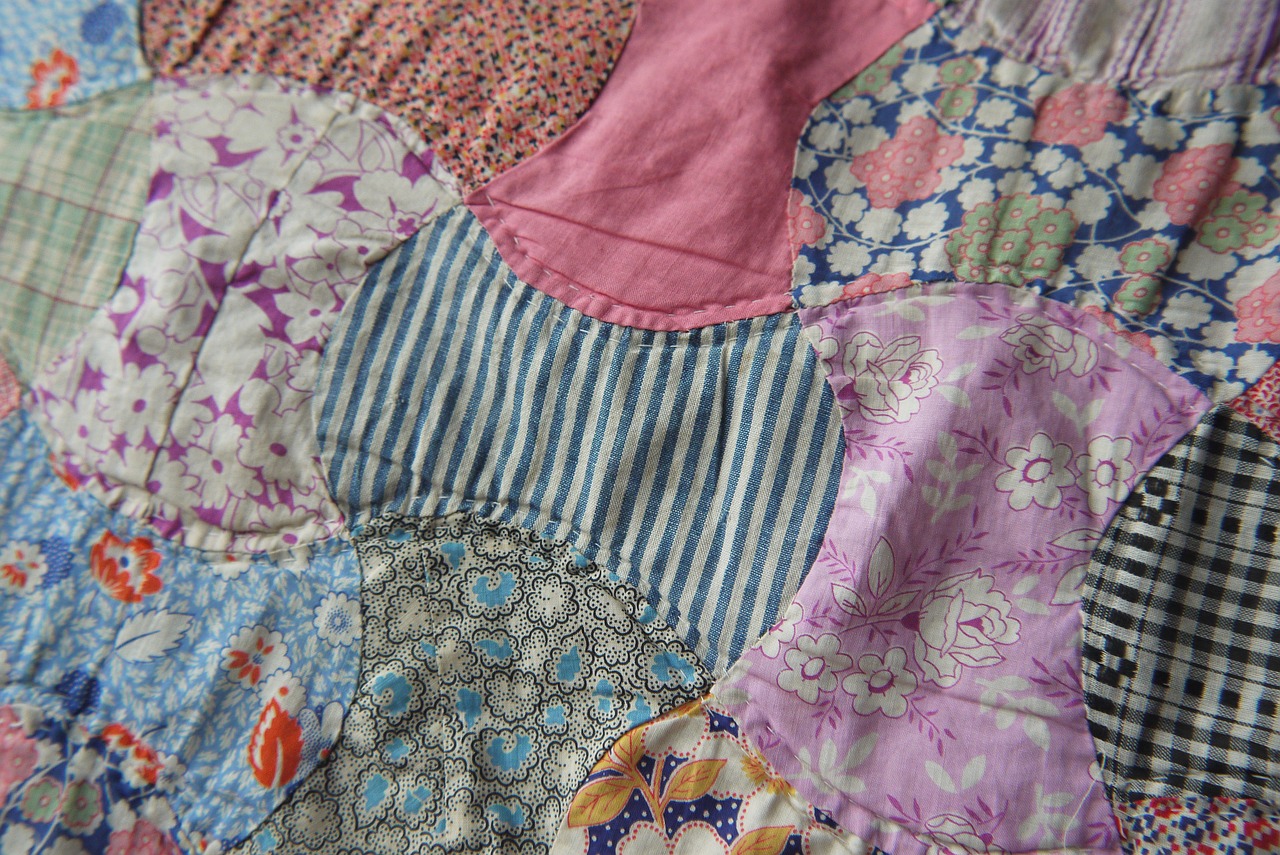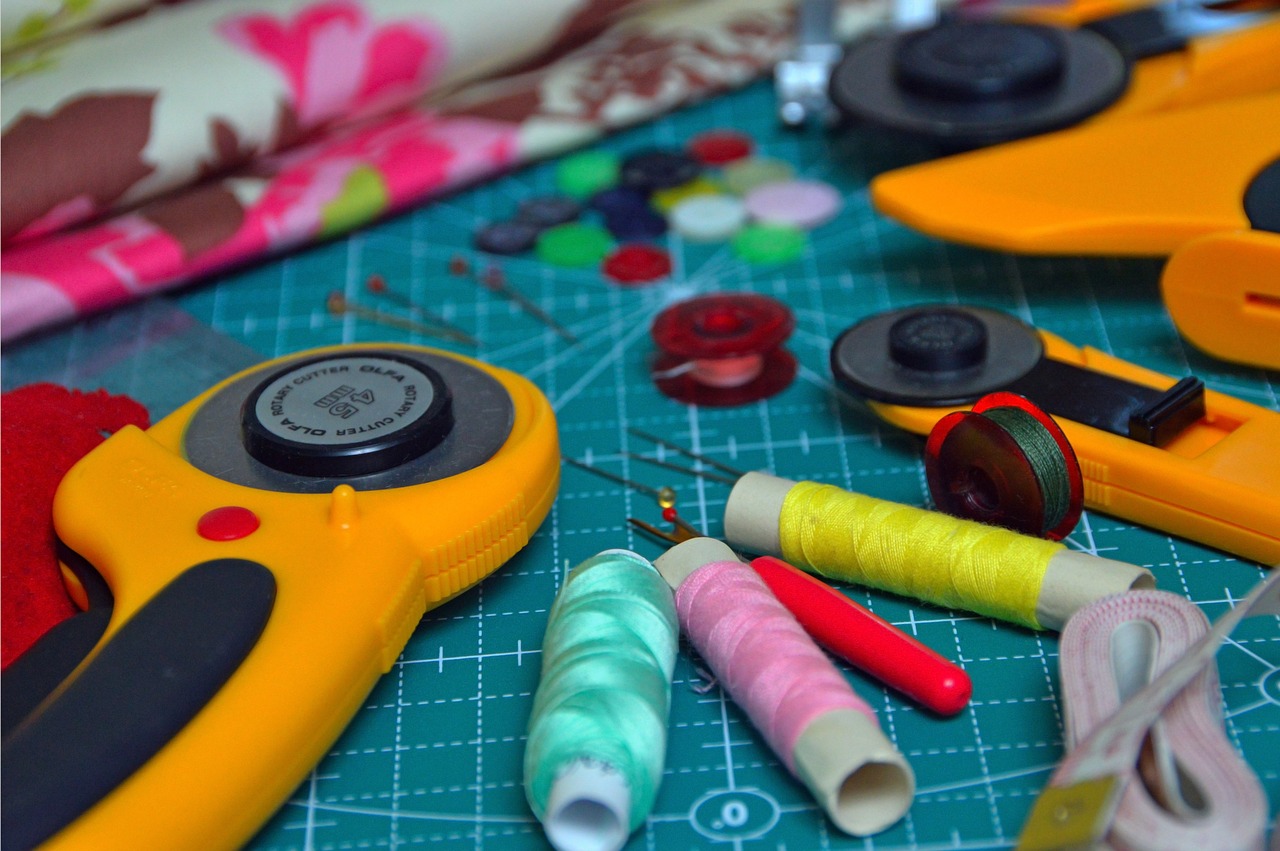Quilting for Charity: How to Get Involved
Quilting for charity is more than just a creative outlet; it’s a heartfelt way to give back to the community. Imagine wrapping someone in a cozy quilt made with love, knowing that your efforts can bring warmth and comfort to those in need. Whether you’re a seasoned quilter or just starting out, getting involved in charitable quilting can be a fulfilling experience that not only enhances your skills but also connects you with like-minded individuals who share your passion for making a difference.
In this article, we’ll explore the various ways you can contribute your quilting talents to charity. From understanding the impact of your work to finding local organizations that need your help, we’ll guide you through the process of getting involved. You’ll discover how your quilting can brighten someone’s day, whether it’s a child in a hospital, a family in a shelter, or anyone facing hardship.
So, are you ready to take your quilting to the next level? Let’s dive into the rewarding world of quilting for charity and see how you can make a meaningful impact in your community and beyond!
When you think about the impact of quilting for charity, it’s easy to see how a simple act of creativity can ripple through the lives of many. Quilts provide not just physical warmth but also emotional comfort. They can serve as a symbol of hope, love, and community support. Every stitch you make is a testament to your dedication to helping others, and that’s something truly special.
Charitable quilting initiatives can foster a sense of community spirit. When you join forces with others who share your passion, you create a network of support and encouragement. This camaraderie can lead to friendships that last a lifetime, all while working towards a common goal: to bring comfort to those in need. The positive effects of charitable quilting extend beyond the quilts themselves; they can inspire others to get involved, creating a cycle of giving that benefits everyone.
Finding local organizations that accept quilt donations is a vital first step in your charitable journey. Start by reaching out to community centers, shelters, and hospitals. Many of these organizations have ongoing needs for quilts and blankets, especially during colder months or in times of crisis. Don’t hesitate to ask around or search online for groups that align with your values and interests.
Here are some tips to help you locate and connect with these groups:
- Use Social Media: Platforms like Facebook and Instagram can be great resources for finding local quilting groups and charitable organizations.
- Attend Community Events: Local fairs, craft shows, and charity events often feature booths from organizations looking for donations.
- Network with Other Quilters: Join local quilting clubs or online forums to share information and resources.
Understanding the specific needs of your community is crucial in guiding your quilting efforts. Take the time to assess local demands and align your projects accordingly. For instance, if you discover that there’s a high number of families in need of warm bedding, you can focus your quilting efforts on creating larger quilts or blankets. This targeted approach ensures that your work has the maximum impact.
Local shelters often have urgent needs for quilts and blankets, especially during harsh weather conditions. Reaching out to these vital organizations can provide you with insight into their specific requirements. You might find that they need quilts for families, individuals, or even specific demographics like children or the elderly. Collaborating with shelters not only fulfills their immediate needs but also builds a relationship that can lead to ongoing support and engagement.
Hospitals and care facilities are another excellent avenue for charitable quilting. Many patients and their families appreciate the comfort of a handmade quilt during difficult times. By partnering with these institutions, you can provide a tangible source of comfort that can ease the emotional burden of illness or recovery. Reach out to local hospitals to see if they have programs in place for accepting quilt donations, and inquire about their specific needs.
Collaborating with others can significantly enhance your quilting experience. Joining local quilting groups or participating in workshops focused on charity projects can provide you with new skills, techniques, and inspiration. These gatherings can be both educational and social, allowing you to meet fellow quilters who share your passion for helping others.
Having the right materials is essential for successful quilting. If you’re looking to source fabric and supplies for your charitable endeavors, consider local fabric stores or online retailers that offer sales or discounts. Additionally, you can often find fabric donations from friends, family, or community members who may have extra materials they’re willing to part with.
If you have extra materials, consider donating them to fellow quilters or organizations. This not only helps others but also promotes a sense of community and collaboration. Many quilting groups appreciate fabric donations, as they can use them in their charitable projects.
Organizing a supply drive can mobilize your community to contribute. By setting up a donation box in a local business or hosting an event, you can encourage others to donate fabric, thread, and other quilting supplies. Promote your drive through social media and local community boards to maximize participation.
Documenting your quilting experiences can inspire others to get involved. Whether it’s through social media, a personal blog, or community events, sharing your journey can encourage more people to participate in charitable quilting. Highlight the stories behind your quilts and the people they are intended to help, making your efforts relatable and impactful.
Q: Do I need to be an expert quilter to contribute?
A: Absolutely not! Quilting for charity is open to everyone, regardless of skill level. The important thing is your willingness to help and learn.
Q: What types of quilts are most needed?
A: Different organizations may have specific needs. Generally, larger quilts for families, smaller quilts for children, and lap quilts for seniors are always in demand.
Q: Can I donate my time instead of quilts?
A: Yes! Many organizations appreciate volunteers who can help with sewing, organizing, or distributing quilts.

Understanding the Impact of Quilting for Charity
Quilting for charity is more than just a creative outlet; it's a powerful way to bring comfort and hope to those who need it most. Imagine wrapping someone in a quilt made with love, knowing it could provide warmth during a cold night or a sense of security during tough times. This simple act of kindness can have a profound impact on individuals and communities alike. When you contribute your time and skills to quilting for charity, you're not just making a blanket—you're creating a tangible expression of care that resonates deeply with those who receive it.
Charitable quilting initiatives foster a strong sense of community spirit. They unite people from diverse backgrounds, all working towards a common goal: to help others. As you stitch together fabric pieces, you're also stitching together relationships, creating bonds that transcend age, culture, and experience. Whether you're a seasoned quilter or just starting out, you can join forces with others who share your passion for making a difference. Together, you can create quilts that tell stories, reflect hopes, and provide solace to those in need.
Moreover, the impact of quilting for charity extends beyond the recipients. It can transform the lives of the quilters themselves. Engaging in charitable activities can boost your mental health, enhance your sense of purpose, and elevate your overall well-being. As you immerse yourself in the process of creating something beautiful for someone else, you may find that it brings you joy and fulfillment. This symbiotic relationship between giving and receiving makes charitable quilting a truly rewarding experience.
To illustrate the positive effects of quilting for charity, consider the following:
| Benefits | Recipients | Quilters |
|---|---|---|
| Provides warmth and comfort | Individuals in need | Sense of accomplishment |
| Fosters community connections | Local shelters and organizations | New friendships and networks |
| Promotes mental well-being | Patients in hospitals | Boosts creativity and mindfulness |
In conclusion, quilting for charity is a profound way to make a difference. It is not just about fabric and thread; it is about connecting hearts and spreading love. Whether you’re piecing together a quilt for a child in a shelter or crafting a comforting blanket for a hospital patient, your efforts can create ripples of hope that extend far beyond the seams of your creation. So, why not grab your fabric and start sewing? Your hands can create magic, and your heart can inspire change.

Finding Local Charitable Organizations
When it comes to quilting for charity, the first step is often discovering local organizations that welcome quilt donations. This can feel like a daunting task, but it’s easier than you might think! Start by tapping into your local community resources. Many cities have directories or online platforms that list charitable organizations. Websites like VolunteerMatch or Idealist can be great starting points to find groups focused on helping those in need.
Another effective way to find local charitable organizations is by reaching out to your friends, family, or fellow quilters. Word of mouth can be incredibly powerful. Ask around at your quilting circles or craft fairs. You might be surprised at how many people are already involved in charitable quilting projects and can point you in the right direction. Additionally, social media platforms like Facebook often have community groups dedicated to local charities where you can connect with others who share your passion.
Once you’ve identified a few organizations, take the time to research their missions and the communities they serve. Understanding their specific needs can help you tailor your quilting projects to be as impactful as possible. For instance, some organizations may focus on providing quilts for children in foster care, while others might support homeless shelters or veterans' groups. By aligning your skills with the needs of these organizations, you can ensure your efforts are making a real difference.
Don’t forget to consider local shelters and hospitals as potential partners. These institutions often have urgent needs for quilts and blankets, particularly during colder months. By reaching out directly, you can discuss how your quilting skills can provide comfort and warmth to those who need it most. It's always a good idea to call ahead or drop by to introduce yourself and express your interest in contributing. This personal touch can make a big difference in establishing a connection.
In addition to traditional charitable organizations, consider engaging with schools or community centers. Many of these places host events that could benefit from your quilting talents. For example, some schools may have programs that provide quilts to students in need, while community centers might run initiatives for the elderly. By broadening your search, you can uncover numerous opportunities to make a positive impact through your quilting.
Lastly, don’t hesitate to create your own initiative if you can’t find an organization that resonates with you. Gather a few friends or fellow quilters and start your own charitable quilting group. Whether it’s making quilts for a specific cause or hosting workshops to teach others how to quilt, your efforts can inspire others to get involved and make a difference in the community.

Researching Community Needs
When it comes to quilting for charity, understanding the specific needs of your community is absolutely essential. It's like being a chef who knows their ingredients; the better you understand what’s needed, the more delicious your contributions will be. Start by reaching out to local organizations, shelters, and hospitals. They often have their fingers on the pulse of the community and can provide insight into what types of quilts are most needed. For instance, some areas might require baby quilts for new mothers, while others may need larger blankets for the homeless during winter months.
To effectively assess these needs, consider conducting informal surveys or interviews with community leaders. You could ask questions like:
- What specific demographics are you serving?
- Are there seasonal needs we should be aware of?
- What types of quilts or materials would be most beneficial?
Additionally, you can visit community forums or social media groups dedicated to local issues. These platforms can be goldmines for discovering what people are talking about and what they feel is lacking. You might find that certain neighborhoods have urgent needs that aren't being met, which can guide your quilting projects. Remember, the goal is to create quilts that not only provide warmth but also resonate with the recipients on a personal level.
Another effective strategy is to partner with schools or community centers. They often have programs in place that cater to underprivileged families and can help you align your quilting efforts with their initiatives. For example, if a local school runs a program for children in need, you could create colorful quilts that bring joy and comfort to those kids. This collaboration not only enhances the impact of your work but also fosters a sense of community spirit.
In summary, researching community needs is not just a step in the process; it's the foundation upon which your charitable quilting efforts will stand. By taking the time to understand the specific requirements of your area, you can ensure that your quilts are not only beautiful but also truly beneficial to those who receive them. So, roll up your sleeves, dive into your community, and let the needs guide your quilting journey!

Connecting with Local Shelters
When it comes to making a difference through quilting, connecting with local shelters is a powerful way to provide immediate comfort to those in need. Shelters often serve individuals and families facing challenging circumstances, and a warm quilt can bring a sense of security and warmth that they may be missing. But how do you go about establishing these connections? It’s simpler than you might think!
Start by researching shelters in your area. Many cities have various types of shelters, including those for the homeless, domestic violence survivors, and even youth shelters. A quick online search or a phone call to your local community center can provide you with a list of organizations that are actively seeking donations. Once you have identified a few potential shelters, reach out to them directly. Don’t hesitate to express your interest in donating quilts and ask about their specific needs. Some shelters may have particular requirements regarding size, fabric type, or themes.
Another effective way to connect is by visiting the shelters in person. This not only allows you to see the environment and understand the people they serve but also gives you the chance to meet the staff. Building a personal relationship with the shelter can lead to more meaningful interactions. You might even discover opportunities to volunteer your time or skills in other areas, such as teaching quilting classes or organizing a quilting event.
While you’re establishing these connections, consider asking about their current needs. Many shelters may require more than just quilts; they might also need blankets, pillows, or even clothing. By understanding their needs, you can tailor your quilting efforts to provide the most impact. For example, if a shelter is particularly low on children's items, you could focus on creating colorful, playful quilts that would brighten a child's space.
Additionally, you can collaborate with other quilters in your community to amplify your efforts. Forming a small group dedicated to supporting local shelters can not only increase the number of quilts you produce but also foster a sense of community and shared purpose. You can set up a regular meeting schedule to work on projects together, share tips, and celebrate your successes. This collaborative spirit can transform the act of quilting into a rewarding social experience.
Lastly, don’t forget to follow up after you’ve made your donations. A simple thank you note or a quick email to the shelter can go a long way. It shows that you care about the impact of your contributions and keeps the line of communication open for future projects. Who knows? They might have other ideas for how you can help or even invite you to special events where your quilts can be showcased.
Connecting with local shelters is not just about giving; it’s about building relationships and understanding the needs of your community. The warmth of a quilt can be a beacon of hope for those in need, and your efforts can truly make a difference.
- How do I find local shelters that need quilts?
Start by searching online for shelters in your area or contacting local community centers for recommendations. - What types of quilts are shelters looking for?
Most shelters appreciate any type of quilt, but it's best to ask about specific needs, such as size or fabric preferences. - Can I volunteer my time at a shelter?
Yes! Many shelters welcome volunteers to help with various tasks, including teaching quilting or organizing donation drives. - What if I have extra fabric or supplies?
Consider donating your extra materials to fellow quilters or local organizations that support charitable quilting projects.

Engaging with Hospitals and Care Facilities
When it comes to making a difference through quilting, hospitals and care facilities are often overlooked gems where your talents can shine. Imagine the comfort a warm quilt can bring to a patient recovering from surgery or a child facing a long hospital stay. By engaging with these institutions, you not only provide physical warmth but also emotional support. So, how can you get involved?
First, it's essential to understand the specific needs of the hospitals or care facilities in your area. Many hospitals have programs that accept quilt donations, especially for pediatric wards or cancer care units. You can start by reaching out directly to these facilities. A simple phone call or email can open the door to a rewarding partnership. When contacting them, be sure to ask about:
- The types of quilts they accept (size, theme, etc.)
- Any specific fabric guidelines or restrictions
- How often they need donations
- Opportunities for collaboration on larger projects
Once you’ve established a connection, consider organizing a quilting event specifically for the hospital. This could be a one-time gathering or a recurring workshop where community members come together to create quilts. Not only does this foster a sense of community, but it also raises awareness about the needs of patients in your area. You might even invite hospital staff to participate, allowing them to share stories that can inspire your quilting designs.
Another fantastic way to engage is through themed quilt drives. For instance, you could focus on creating quilts for specific occasions like holidays, or themes like “comfort” or “hope.” By aligning your quilting projects with the hospital’s needs or events, you can make a significant impact and bring joy to those who need it most. Plus, it’s a great way to rally others to join your cause!
Don't forget to document your efforts! Sharing your quilting journey on social media or through community newsletters can inspire others to get involved. You might even find other quilters who are eager to contribute their skills or resources. Remember, every quilt tells a story, and by engaging with hospitals and care facilities, you’re weaving together a narrative of compassion and care that extends far beyond the fabric.
So, if you’re ready to make a difference, start reaching out today! Your quilts can provide not just warmth, but also a sense of hope and love to those facing challenging times.
Q: What types of quilts are hospitals looking for?
A: Hospitals typically accept quilts of various sizes, especially those suitable for children and adults in recovery. Always check with the specific facility for any guidelines.
Q: Can I organize a quilting event at a hospital?
A: Yes! Many hospitals welcome community involvement. Reach out to see if they’d be open to hosting an event where volunteers can create quilts together.
Q: How can I ensure my quilts are safe for patients?
A: Use non-toxic fabrics and avoid embellishments that could pose a choking hazard. Always ask the facility for their safety guidelines.

Joining Quilting Groups and Workshops
Joining quilting groups and workshops can be one of the most rewarding experiences for anyone passionate about quilting, especially when it comes to charitable endeavors. Imagine being surrounded by like-minded individuals who share your enthusiasm for fabric, patterns, and the joy of creating something beautiful that can also make a difference in someone else's life. It's not just about the quilts; it’s about the community, the friendships formed, and the collective impact you can have.
When you participate in quilting groups, you tap into a wealth of knowledge and experience. Many seasoned quilters are eager to share their tips and tricks, whether it’s about choosing the right fabric, mastering a specific technique, or understanding the best ways to donate your finished quilts. Workshops often provide hands-on guidance and allow you to learn new skills that can enhance your quilting projects. Plus, the energy in a room full of creative minds can spark inspiration, helping you to push your boundaries and try new things.
Another significant advantage of joining these groups is the opportunity to collaborate on charity projects. Many quilting circles focus their efforts on creating quilts for local shelters, hospitals, or other organizations in need. Working together not only speeds up the quilting process but also fosters a sense of camaraderie. You might find yourself participating in group sewing days, where laughter and stories flow as freely as the fabric scraps. It’s a wonderful way to bond over a shared mission of giving back.
Here are a few tips on how to find and get involved with quilting groups and workshops:
- Local Craft Stores: Many craft stores host quilting classes and can connect you with local quilting groups.
- Community Centers: Check bulletin boards or websites for announcements about quilting workshops or clubs.
- Social Media: Platforms like Facebook and Instagram often have groups dedicated to quilting. You can join discussions, share your work, and find local meetups.
- Online Forums: Websites like Reddit or quilting-specific forums are great places to ask for recommendations on local groups.
Once you find a group that resonates with you, don’t hesitate to dive in! Be open to learning and sharing your own experiences. Remember, every quilter started somewhere, and your unique perspective can contribute to the group’s dynamic. Whether you’re a beginner or a seasoned pro, your participation can help spread awareness about the importance of quilting for charity and inspire others to join the cause.
In conclusion, joining quilting groups and workshops is not just about enhancing your skills; it's about becoming part of a community that values creativity, compassion, and collaboration. So, gather your fabric, grab your rotary cutter, and get ready to make some incredible quilts that will warm hearts and homes!
Q: Do I need to have prior quilting experience to join a group?
A: Not at all! Many groups welcome beginners and offer classes to help you get started.
Q: What should I bring to a quilting workshop?
A: Bring your sewing machine (if required), basic sewing supplies, and any fabric you want to use. Don’t forget your enthusiasm!
Q: Are there any costs associated with joining a quilting group?
A: Some groups may have a small membership fee or charge for workshops, but many are free to join. Always check in advance!
Q: Can I participate in charity quilting even if I can’t sew?
A: Absolutely! There are many ways to contribute, such as organizing, fundraising, or donating materials.
Q: How can I share my completed quilts with the community?
A: Many groups organize donation events, or you can directly connect with local charities to find out how to donate your quilts.

Gathering Supplies for Your Quilting Projects
When it comes to quilting for charity, having the right supplies can make all the difference. Imagine embarking on a journey without the necessary tools; it would be frustrating, right? Similarly, your quilting experience can be enhanced significantly when you gather quality materials. Start by identifying what you need for your projects. Typically, this includes fabric, batting, thread, and quilting tools. But don't worry if you're on a budget; there are plenty of ways to source these materials without breaking the bank!
One of the best places to begin is by checking out local fabric stores. Many of these shops offer discounts or even have sections dedicated to remnants or clearance items. You might be surprised at the treasures you can find! Additionally, consider visiting thrift stores or online marketplaces where you can often find fabric at a fraction of the retail price. Think of it as a treasure hunt—each piece could be the perfect addition to your quilt.
Another fantastic way to gather supplies is by connecting with fellow quilters. You might have friends or family members who have extra fabric lying around, or you could join local quilting groups where members often share or trade materials. This not only helps you save money but also fosters a sense of community. You can even set up a small fabric swap event where everyone brings their unused supplies to trade. It’s a win-win situation!
For those who might have a bit more time on their hands, organizing a quilting supply drive can be an excellent way to gather materials. You could reach out to your community through social media or local bulletin boards, asking for donations of fabric, batting, and other supplies. Make sure to promote your drive well in advance and provide clear details on what you need. You could even create a small flyer to distribute in your neighborhood or at local events.
Here’s a quick overview of how to approach gathering supplies:
| Method | Description |
|---|---|
| Local Fabric Stores | Look for discounts, clearance items, and remnants. |
| Thrift Stores | Find unique fabrics at budget-friendly prices. |
| Fabric Swaps | Trade unused materials with fellow quilters. |
| Supply Drives | Organize community efforts to gather quilting supplies. |
Lastly, don’t forget about the power of online resources! Websites like Freecycle or Facebook Marketplace can be goldmines for cheap or even free quilting supplies. Just remember to be polite and respectful when reaching out to others. You’ll find that many people are happy to help when they know their donations will go to a good cause. So, roll up your sleeves, gather your supplies, and let your creativity flow as you create beautiful quilts for those in need!

Donating Fabric and Supplies
Donating fabric and supplies is a fantastic way to support charitable quilting projects without necessarily picking up a needle and thread. If you have a stash of fabric that’s been gathering dust or extra supplies that you no longer need, consider sharing them with fellow quilters or local organizations. Not only does this help reduce waste, but it also empowers others to create beautiful quilts that can bring comfort to those in need. Think of it as passing on the quilting torch, allowing your materials to be transformed into something meaningful.
Before you donate, it's essential to ensure that your fabric and supplies are in good condition. Check for any stains, tears, or odors that might make the items unsuitable for quilting. Most organizations appreciate donations that are clean and usable. If you're unsure about what to donate, here’s a quick list of items that are often needed:
- Fabric remnants (preferably cotton or flannel)
- Batting (any size)
- Quilting tools (scissors, rotary cutters, etc.)
- Threads (new or gently used)
- Patterns or quilting books
Once you've sorted through your supplies, the next step is to find a suitable recipient. Many local quilting groups, shelters, and charities accept fabric donations. You can start by reaching out to organizations in your area that focus on quilting for charity. They may have specific guidelines or needs, so it’s always a good idea to check in before you drop off your donations. Additionally, consider posting on social media or local community boards to connect with other quilters who might be in need of materials.
Another engaging way to donate is to host a fabric swap or donation event. This can be a fun way to gather friends and fellow quilters to share their excess supplies while also collecting items for charity. Imagine the joy of seeing your old fabric transformed into a beautiful quilt by someone else! Plus, it fosters a sense of community and encourages collaboration among quilters.
In summary, donating fabric and supplies is a simple yet impactful way to contribute to the quilting community and help those in need. By sharing your resources, you not only declutter your space but also provide the tools for others to create something beautiful. So, gather up those unused materials and start making a difference today!
Q1: What types of fabric are best for donation?
A1: Cotton and flannel fabrics are highly preferred due to their durability and comfort. Avoid donating fabric that is stained, torn, or has an unpleasant odor.
Q2: Can I donate partially used supplies?
A2: Yes, partially used supplies like threads and batting are often welcome, as long as they are in good condition and can be used for future projects.
Q3: How do I find local organizations that accept fabric donations?
A3: You can search online for local quilting groups, shelters, or charities. Social media platforms and community bulletin boards are also great places to connect with others who might be in need of fabric.
Q4: Is it possible to donate fabric through mail?
A4: Yes, many organizations accept fabric donations through mail. Just ensure you check their guidelines for shipping and any specific needs they may have.

Creating a Quilting Supply Drive
Organizing a quilting supply drive can be a fantastic way to rally your community around a common cause, all while gathering the necessary materials for your charitable quilting projects. Imagine turning your passion for quilting into a community event that not only benefits those in need but also brings people together. So, where do you start? First, consider the specific supplies that are most needed. This could include fabric, batting, thread, and even sewing tools. By pinpointing these essentials, you can effectively communicate your needs to potential donors.
Next, choose a date and location for your drive. It could be held at a local community center, library, or even your own home. Make sure it’s a place that’s accessible and welcoming. Once you have that set, it’s time to spread the word! Utilize social media platforms, local bulletin boards, and community newsletters to advertise your event. You might say something like, “Join us in making a difference! Bring your fabric scraps and help us create warmth for those in need!” This not only informs people but also inspires them to participate.
During the drive, create an inviting atmosphere. Set up a cozy space where people can drop off their supplies, and consider having refreshments available. A warm cup of coffee or tea can make all the difference! Additionally, think about incorporating a small quilting demonstration or a mini-workshop. This can serve as an engaging way to show attendees how their contributions will be used, making the experience more meaningful. You could even set up a table where people can learn basic quilting techniques, fostering a sense of community and shared purpose.
It’s also important to keep track of what you collect. Having a simple spreadsheet or a checklist can help you manage the donations efficiently. This not only keeps things organized but also allows you to thank your contributors later. After the drive, consider sending out thank-you notes or posting on social media to acknowledge everyone’s generosity. This not only shows appreciation but also encourages future participation in similar events.
Lastly, don’t forget to document the entire process! Take photos, share stories, and let everyone see the impact of their contributions. By showcasing the journey from supply drive to finished quilts, you’ll inspire others to join in and perhaps even host their own drives. Remember, every piece of fabric donated is a stitch in the fabric of community support, bringing warmth and comfort to those who need it most. So, gather your friends, set a date, and let’s make some magic happen!
- What types of supplies do I need for a quilting supply drive? You should focus on fabric, batting, thread, and sewing tools, but also consider other materials like scissors and rotary cutters.
- How do I promote my quilting supply drive? Utilize social media, community bulletin boards, and local newsletters to spread the word. Personal invitations can also be effective!
- Can I host a virtual supply drive? Absolutely! You can set up an online platform for people to donate funds or arrange for drop-off locations.
- What if I don't have many supplies to donate? Every little bit helps! Even small contributions can make a significant impact, so don’t hesitate to participate.

Sharing Your Quilting Journey
Documenting your quilting experiences can be a powerful way to inspire others and spread the word about the joy of charitable quilting. Whether you're a seasoned quilter or just starting, sharing your journey can create a ripple effect, encouraging others to join in and make a difference. Have you ever thought about how your unique story could motivate someone else to pick up a needle and thread? By showcasing your projects, you not only celebrate your creativity but also highlight the impact of your work on the community.
There are numerous platforms and methods you can use to share your quilting journey. Social media is an incredibly effective tool for this purpose. Platforms like Instagram and Facebook allow you to post pictures of your quilts, share your progress, and connect with fellow quilters. You could even create a dedicated page or account focused solely on your charitable quilting efforts. This not only keeps your friends updated but also attracts new followers who share your passion.
In addition to social media, consider starting a blog or a YouTube channel. These platforms provide a space for you to delve deeper into your quilting process, share tutorials, and discuss the stories behind your quilts. You could write about the inspiration for each piece, the materials you chose, and the organizations you’re supporting. A blog can serve as a digital scrapbook of your quilting journey, while videos can give viewers a behind-the-scenes look at your techniques and the love that goes into each stitch.
Community events are another fantastic avenue for sharing your quilting journey. Organizing or participating in local quilting shows, fairs, or charity events allows you to showcase your work in person. You can set up a booth, display your quilts, and even demonstrate your quilting techniques. Engaging with the community face-to-face can create a more profound connection and inspire others to join your charitable efforts. Plus, it’s a great way to meet like-minded individuals who share your passion for quilting!
Don’t forget about the power of storytelling. When sharing your quilting journey, include anecdotes about the people who will benefit from your quilts. Personal stories can make your message more relatable and impactful. For instance, if you made a quilt for a local shelter, share the story of someone who received it and how it made a difference in their life. These narratives can tug at the heartstrings and motivate others to get involved.
Lastly, consider creating a newsletter to keep your friends and family updated on your quilting projects and charitable efforts. This can be a simple email update that includes photos, stories, and upcoming events. It’s a great way to maintain interest and encourage others to participate in future quilting initiatives.
By sharing your quilting journey, you not only celebrate your own creativity but also create a community of support and inspiration. Remember, every quilt tells a story, and your story could be the spark that ignites someone else's passion for quilting for charity. So grab your camera, start writing, and let the world see the beauty of your quilting journey!
- How can I start sharing my quilting journey? Begin by documenting your projects on social media or starting a blog. Share photos, stories, and techniques to inspire others.
- What social media platforms are best for quilters? Instagram and Facebook are popular for sharing visual content, while Pinterest can help you discover new ideas and connect with other quilters.
- Can I organize community events to promote charitable quilting? Absolutely! Organizing quilting shows or charity events can help raise awareness and gather support for your cause.
- How do I engage my audience effectively? Use storytelling to connect with your audience emotionally. Share personal anecdotes and the impact of your quilts on the community.
Frequently Asked Questions
- What is quilting for charity?
Quilting for charity involves creating quilts to donate to those in need, such as homeless individuals, patients in hospitals, or families facing hardships. It's a way to use your quilting skills to bring warmth and comfort to others while fostering a sense of community.
- How can I find local organizations that accept quilt donations?
Start by researching local shelters, hospitals, and community centers. You can also check social media groups or websites dedicated to quilting and charity work. Many organizations are eager to connect with quilters who want to contribute!
- What types of quilts are most needed by charitable organizations?
Most organizations appreciate any type of quilt, but lap quilts, baby quilts, and larger bed quilts are often in high demand. Consider the specific needs of the organization you're working with to ensure your quilts are suitable.
- Can I join a quilting group focused on charity projects?
Absolutely! Many local quilting groups and guilds focus on charitable work. Joining one can provide support, inspiration, and camaraderie as you work on projects together.
- How can I gather supplies for my quilting projects?
Look for fabric sales, clearance sections, or even thrift stores for budget-friendly materials. You can also ask friends and family for fabric donations or organize a supply drive to gather what you need.
- What should I do with extra fabric or supplies?
If you have extra materials, consider donating them to local quilting groups or charitable organizations. Many quilters are always looking for fabric to use in their projects, and your donation can help them make more quilts for those in need.
- How can I share my quilting journey with others?
Sharing your experiences on social media platforms, blogs, or community events can inspire others to get involved in charitable quilting. Documenting your process and the stories behind your quilts can create a powerful connection with your audience.



















